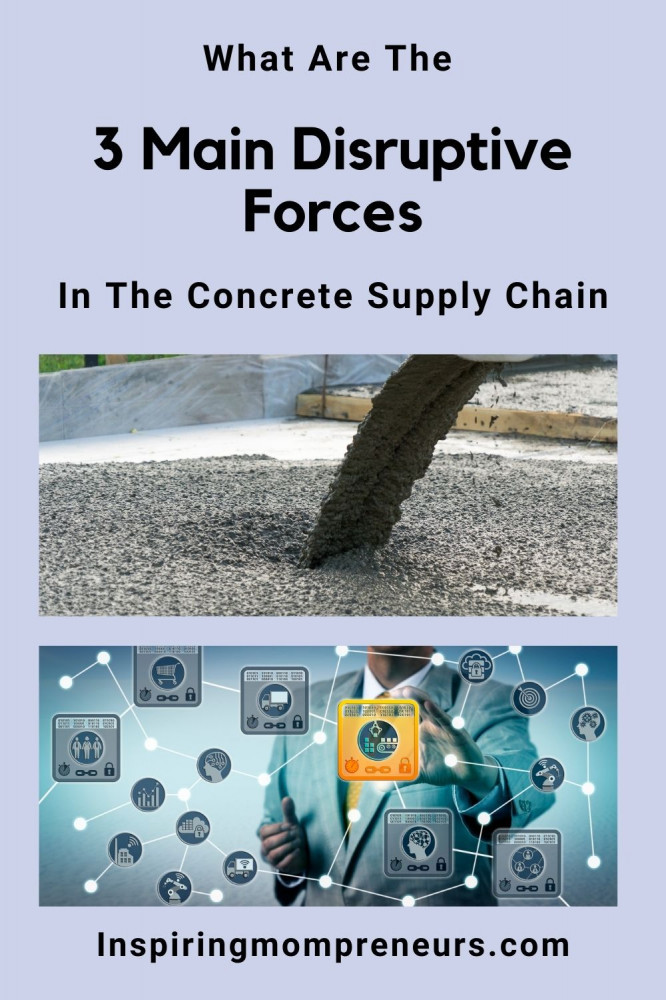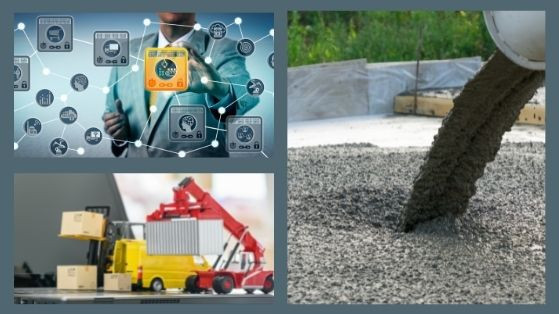In today’s article, we will be looking at three primary disruptive forces in the concrete supply chain currently. Reports show that the demand for renovations and new construction is growing across the globe. This uptick is evident in both the residential and commercial sectors, and it’s expected to continue on an upward trend during the years to come. In fact, the construction industry is forecast to surpass $8 trillion within the next few years. While many construction companies welcome this development, it’s leading to certain challenges as well. This is particularly true when it comes to the concrete supply chain, which has recently experienced significant disruptions.
 Exploring Disruptions in the Concrete Supply Chain
Exploring Disruptions in the Concrete Supply Chain
Concrete is one of the world’s most popular construction materials. It’s used in a wide range of projects and for a long list of structural elements. Both decorative and utilitarian options are available, further driving up the demand for this material.
No doubt, the higher the demand grows, the more challenges construction companies will face in meeting clients’ expectations. That’s only one aspect to consider, though.
Many other disruptive forces have entered the mix, some of which can be addressed through the use of concrete contractor software.
3 Main Disruptive Forces in the Concrete Supply Chain
1. A Shortage of Truck Drivers
America has seen a constantly growing decline in the number of available truck drivers to haul materials to their destinations. According to a recent report, the current driver shortage is estimated at 80,000, and it’s only going to grow worse moving forward.
Thousands of experienced truckers are retiring each year, and there just aren’t enough new CDL drivers entering the industry to replace them. As such, concrete and other supplies are piling up at ports waiting to be loaded and distributed. In turn, construction companies are waiting for their materials to be delivered to them so they can complete their projects.
2. A Lack of Available Workers
In addition to a shortage of truck drivers, America is experiencing a growing deficit of workers in other areas of the concrete supply chain. This includes those who produce concrete for contractors to use. Of course, construction companies themselves are also facing a shortage of skilled workers.
When concrete finally makes its way to suppliers and contractors, there aren’t enough people available to put it into place. That’s slowing down the entire construction industry. Though companies are taking measures to bridge the gap, it’s a slow process that’ll take time to fully resolve.
3. An Uptick in Prices
As mentioned, the availability of concrete and other building materials is waning thanks to pandemic-related shutdowns, logistics issues, and other factors. On the other hand, the demand for construction is surging with no sign of slowing. Per the norm, a shortage of supply and abundance of demand is driving the price of concrete and other materials ever higher.
As is the case with food, fuel, and other products, people need concrete, so they’ll continue to purchase it regardless of the price. Contractors are faced with the dilemma of lowering their prices and cutting into profits or passing along the price hikes to their customers.
Looking to the Future
These are three significant disruptive forces in the concrete supply chain that cause disruption. Analysts expect matters to grow worse before they start to improve. In the meantime, construction companies and other members of the supply chain are scrambling for solutions.
Software geared toward the needs of contractors could provide some of the answers, such as finding the best prices, availability, and ways of getting the concrete from point A to point B and beyond.




